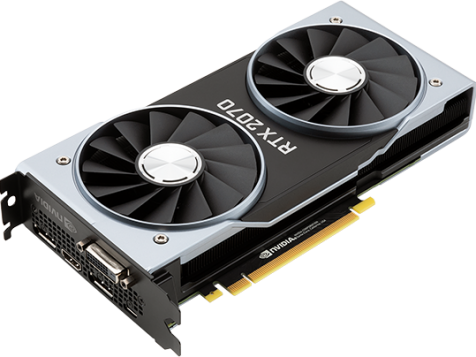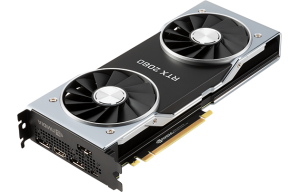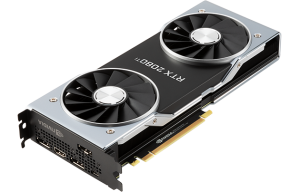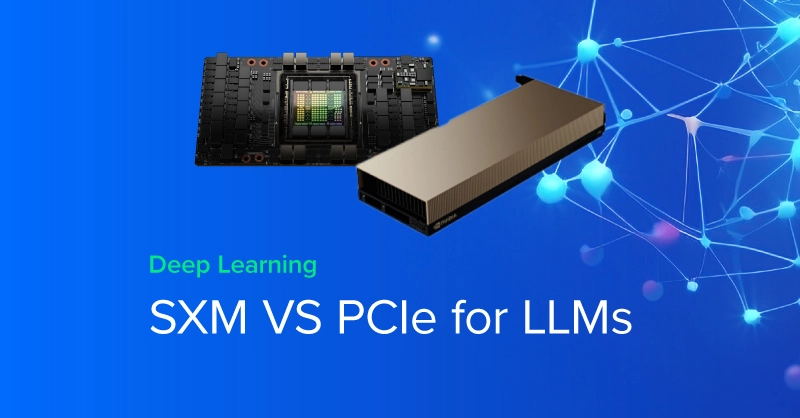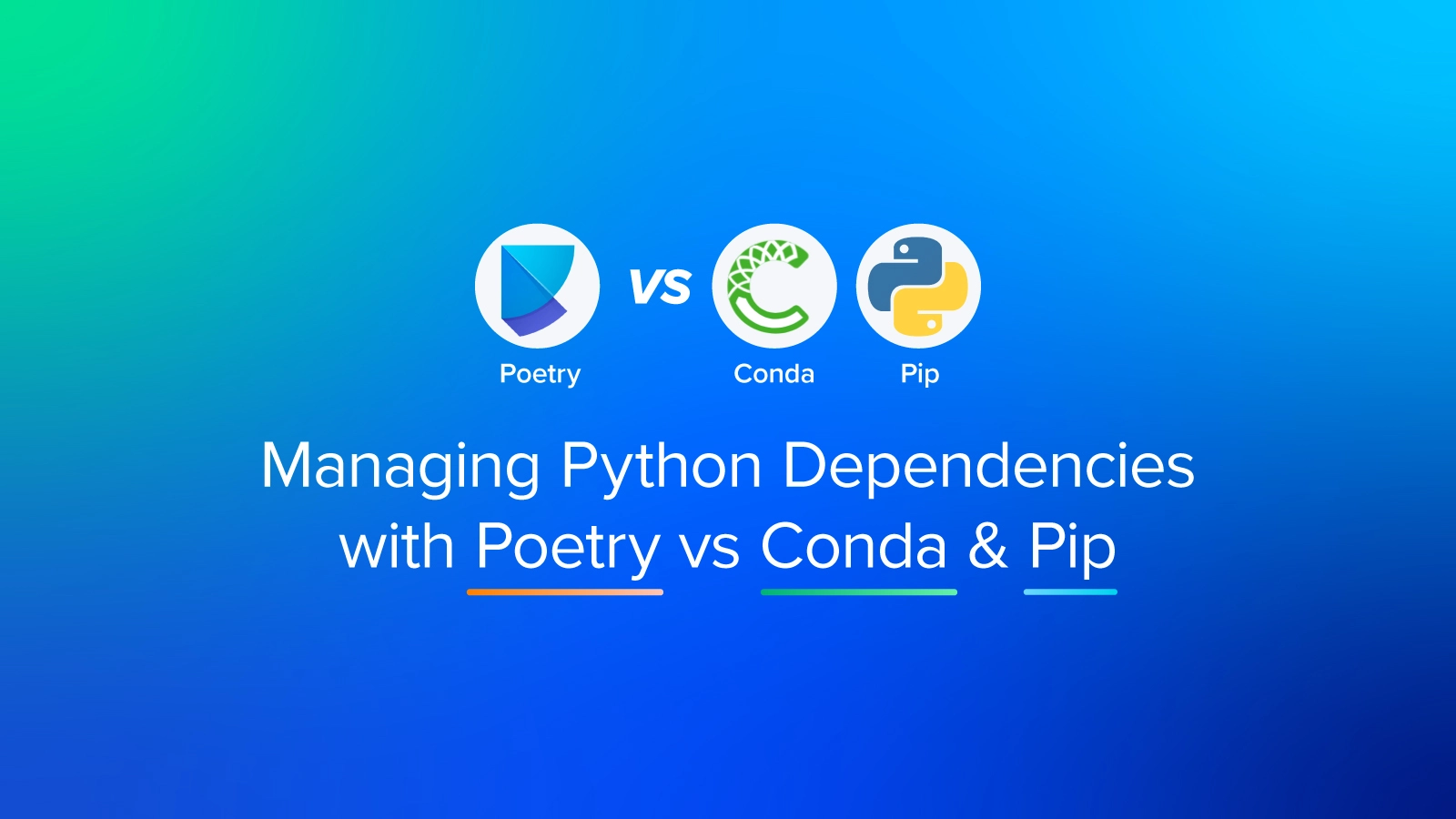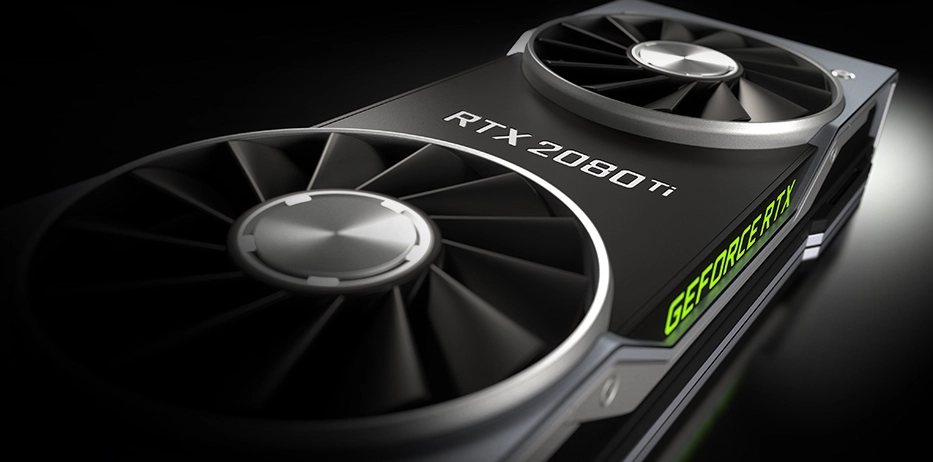
NVIDIA RTX Series: RTX 2080 Ti, RTX 2080, RTX 2070
NVIDIA has finally unveiled its new generation of consumer graphics cards at their Gamescom event (Cologne, Germany) with the GeForce RTX 2080 Ti, RTX 2080 and RTX 2070. After a decade of their 10-series naming convention, NVIDIA has moved on to this next generational 20-series moniker. The RTX as NVIDIA CEO, Jensen Huang, explains -- "Combine different types of rendering technology into one platform." RT Core 10 Gigarays/second as opposed to 1.21(1080Ti).
The RTX 2070, 2080 and 2080 Ti will be the first consumer-level graphics cards based on NVIDIA's next-generation Turing architecture, which the company announced earlier this month at the SIGGRAPH computing conference. At that time, NVIDIA also revealed its first Turing-based products: Quadro RTX 8000, Quadro RTX 6000, Quadro RTX 5000, which is geared toward professional applications.
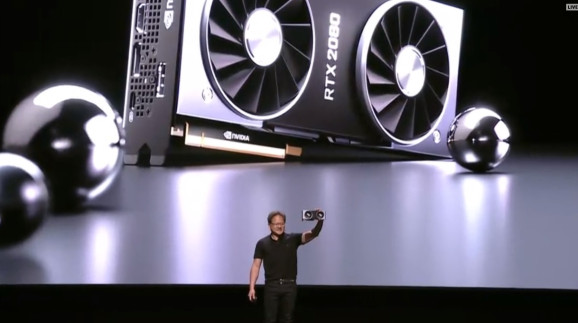
(Image: NVIDIA live stream)
Turing RTX GPUs Key Features:
RTX 2070
| RTX 2080
| RTX 2080 Ti
| |
|---|---|---|---|
| CUDA Cores | 2,304 | 2,944 | 4,352 |
| Boost Clock | 1620 MHz | 1710 MHz | 1545 MHz |
| GPU Memory | 8 GB GDDR6 | 8 GB GDDR6 | 11 GB GDDR6 |
| Memory Speed | 14 Gbps | 14 Gbps | 14 Gbps |
| Architecture | Turing | Turing | Turing |
| Graphics Bus | PCI Express 3.0 x 16 | PCI Express 3.0 x 16 | PCI Express 3.0 x 16 |
| NVLink | No | Yes - With NVIDIA RTX NVLink Bridge | Yes - With NVIDIA RTX NVLink Bridge |
| Display Connectors | DP 1.4 (4), VirtualLink (1) | DP 1.4 (4), VirtualLink (1) | DP 1.4 (4), VirtualLink (1) |
| Form Factor | 4.556" (H) x 10.5" (L) Dual Slot | 4.556" (H) x 10.5" (L) Dual Slot | 4.556" (H) x 10.5" (L) Dual Slot |
What is the NVIDIA RTX Platform?
The NVIDIA RTX platform fuses ray tracing, deep learning and rasterization to fundamentally transform the creative process for content creators and developers through the NVIDIA Turing GPU architecture and support for industry leading tools and APIs.
The RTX platform provides software APIs and SDKs running on advanced hardware to provide solutions capable accelerating and enhancing graphics, photos, imaging and video processing. These include:
- Ray Tracing (OptiX, Microsoft DXR, Vulkan)
- AI-Accelerated Features (NGX)
- Rasterization (Advanced Shaders)
- Simulation (CUDA 10, PhysX, Flex)
- Asset Interchange Formats (USD, MDL)
Ray Tracing
RTX refers to ray tracing, a rendering technique that traces the pathways of rays of light to create exceptionally realistic animations to power games and other interactive animations. Ray tracing in real time has been a goal for graphics card makers for years, and it appears that NVIDIA has become the first to truly attain this photo-realistic lighting effect.
NVIDIA announced a real-time ray tracing technology that it refers to now as the NVIDIA RTX — hence the new naming scheme for the company’s upcoming GPUs — during the 2018 Game Developers Conference in March.
Ray tracing is the standard for applications such as visual effects in the film industry, but it is extremely computationally intensive, which has meant that — at least until now — has been impractical for gaming. In addition to real-time ray tracing, NVIDIA's RTX platform incorporates two existing technologies -- programmable shaders and artificial intelligence.

Exxact Deep Learning Workstations and NVIDIA RTX Series
Exxact Deep Learning Workstations featuring the NVIDIA GeForce RTX Series are available for pre-order now.

10 Years In The Making: Introducing the GeForce RTX 2080 Ti, RTX 2080, and RTX 2070
NVIDIA RTX Series: RTX 2080 Ti, RTX 2080, RTX 2070
NVIDIA has finally unveiled its new generation of consumer graphics cards at their Gamescom event (Cologne, Germany) with the GeForce RTX 2080 Ti, RTX 2080 and RTX 2070. After a decade of their 10-series naming convention, NVIDIA has moved on to this next generational 20-series moniker. The RTX as NVIDIA CEO, Jensen Huang, explains -- "Combine different types of rendering technology into one platform." RT Core 10 Gigarays/second as opposed to 1.21(1080Ti).
The RTX 2070, 2080 and 2080 Ti will be the first consumer-level graphics cards based on NVIDIA's next-generation Turing architecture, which the company announced earlier this month at the SIGGRAPH computing conference. At that time, NVIDIA also revealed its first Turing-based products: Quadro RTX 8000, Quadro RTX 6000, Quadro RTX 5000, which is geared toward professional applications.

(Image: NVIDIA live stream)
Turing RTX GPUs Key Features:
RTX 2070
| RTX 2080
| RTX 2080 Ti
| |
|---|---|---|---|
| CUDA Cores | 2,304 | 2,944 | 4,352 |
| Boost Clock | 1620 MHz | 1710 MHz | 1545 MHz |
| GPU Memory | 8 GB GDDR6 | 8 GB GDDR6 | 11 GB GDDR6 |
| Memory Speed | 14 Gbps | 14 Gbps | 14 Gbps |
| Architecture | Turing | Turing | Turing |
| Graphics Bus | PCI Express 3.0 x 16 | PCI Express 3.0 x 16 | PCI Express 3.0 x 16 |
| NVLink | No | Yes - With NVIDIA RTX NVLink Bridge | Yes - With NVIDIA RTX NVLink Bridge |
| Display Connectors | DP 1.4 (4), VirtualLink (1) | DP 1.4 (4), VirtualLink (1) | DP 1.4 (4), VirtualLink (1) |
| Form Factor | 4.556" (H) x 10.5" (L) Dual Slot | 4.556" (H) x 10.5" (L) Dual Slot | 4.556" (H) x 10.5" (L) Dual Slot |
What is the NVIDIA RTX Platform?
The NVIDIA RTX platform fuses ray tracing, deep learning and rasterization to fundamentally transform the creative process for content creators and developers through the NVIDIA Turing GPU architecture and support for industry leading tools and APIs.
The RTX platform provides software APIs and SDKs running on advanced hardware to provide solutions capable accelerating and enhancing graphics, photos, imaging and video processing. These include:
- Ray Tracing (OptiX, Microsoft DXR, Vulkan)
- AI-Accelerated Features (NGX)
- Rasterization (Advanced Shaders)
- Simulation (CUDA 10, PhysX, Flex)
- Asset Interchange Formats (USD, MDL)
Ray Tracing
RTX refers to ray tracing, a rendering technique that traces the pathways of rays of light to create exceptionally realistic animations to power games and other interactive animations. Ray tracing in real time has been a goal for graphics card makers for years, and it appears that NVIDIA has become the first to truly attain this photo-realistic lighting effect.
NVIDIA announced a real-time ray tracing technology that it refers to now as the NVIDIA RTX — hence the new naming scheme for the company’s upcoming GPUs — during the 2018 Game Developers Conference in March.
Ray tracing is the standard for applications such as visual effects in the film industry, but it is extremely computationally intensive, which has meant that — at least until now — has been impractical for gaming. In addition to real-time ray tracing, NVIDIA's RTX platform incorporates two existing technologies -- programmable shaders and artificial intelligence.

Exxact Deep Learning Workstations and NVIDIA RTX Series
Exxact Deep Learning Workstations featuring the NVIDIA GeForce RTX Series are available for pre-order now.

